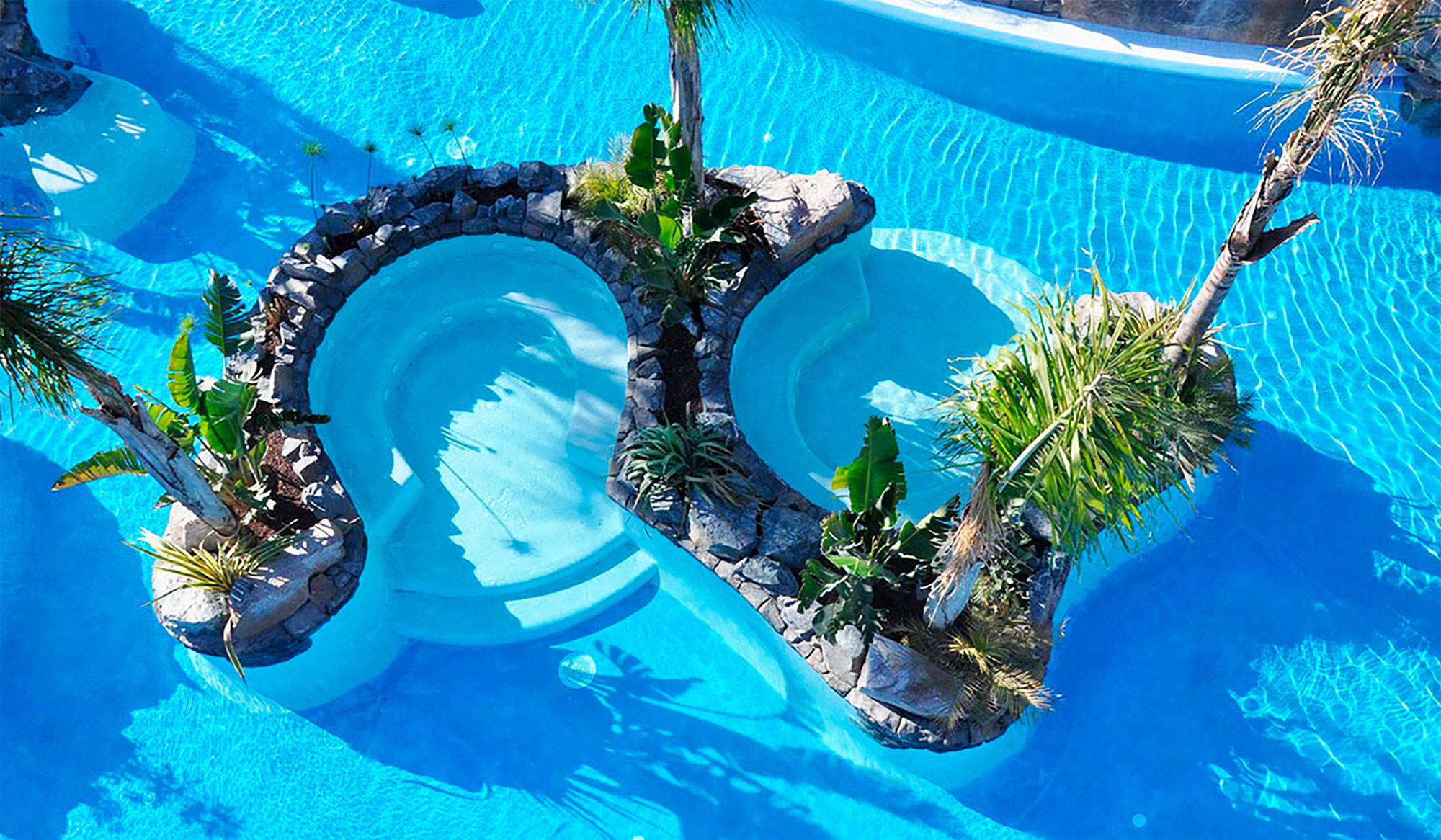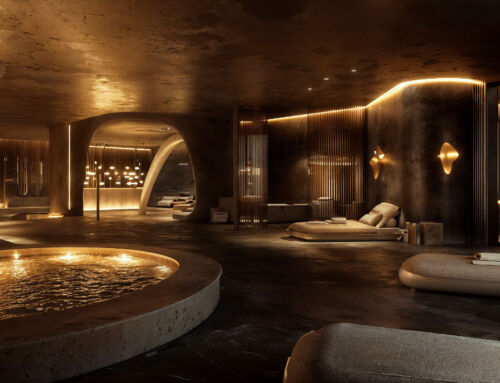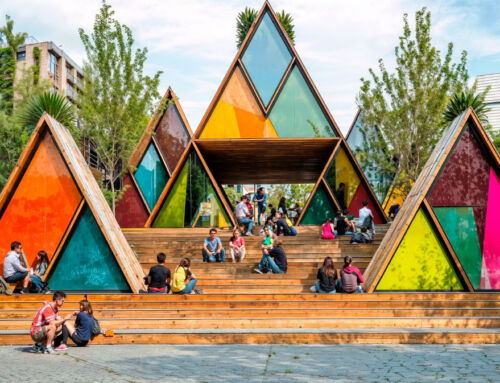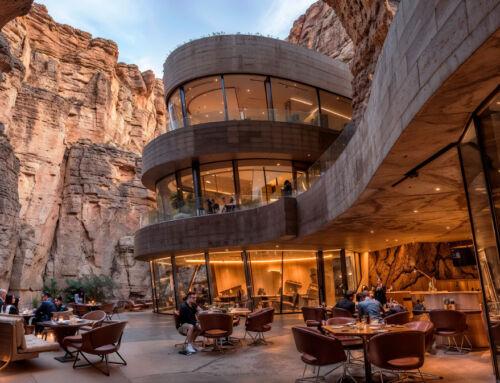There are many factors that affect the final appearance of a swimming pool, whether it is in a private home or a residential community, a hotel or resort, a water park, a campsite or other aquatic facilities. The final result of the appearance of the pool will be a combination of the colour of the pool basin, its depth (or in other words, the amount of water it contains), the weather, the elements that surround it and its location outside or under cover. To all of the above, we must add the fact that it has lighting outside the water or submerged.
The first phenomenon to take into account, regardless of the colour of the pool shell, is that the water reflects the colours of the environment in which it is located, that is to say. the sky outdoors or the lighting conditions of an indoor installation. Since water absorbs the wavelengths of the visible spectrum that are red, orange and yellow, whilst it reflects better those that are blue, we will consider that its predominant colour, when it is clean and free of impurities (as is the case in swimming pools), is precisely that, blue. Furthermore, the greater the depth of the pool, the darker the blue colour of the water, while if the depth does not exceed 50 cm, the water will appear transparent. Therefore, with all these considerations, we can better understand the effect of the colour of the basin on the water, the pool and its surroundings.

The most commonly used colours for pool basins are blue, white, sand-colour and black. Blue is the most common colour as it reinforces the natural colour of the water. Variations include turquoise, light blue, indigo and ultramarine, amongst others, with the nuances that each brings to the pool.
The white colour of the pool basin turns it into a canvas on which the crystal clear water sets the tones, with a relaxing effect and a sense of transparency and cleanliness. At the same time, by reflecting the sun’s rays in very warm geographical areas, it helps to keep the water slightly fresher.

Sandy tones give the pool an effect similar to that of some beaches in the Caribbean Sea, and their tonality varies easily with the weather conditions.
Finally, the black colour of the basin produces a mirror effect on the surface of the water. Otherwise, it is an elegant colour, produces a sense of depth and helps to increase the temperature of the water and therefore prolongs the bathing season.
Whilst the above are the most common colours for pool basins, today other, perhaps more extravagant colours are used for decorative reasons. These are reds, oranges, yellows or pinks. These strident tones give the pool a unique and somewhat strange, otherworldly look. They dissipate the effect of the blue shift of the spectrum reflected by the water. In addition to this, there is the possibility of producing patterns on the bottom of the pool and on its walls, for which the only limit in shapes and colours is the limit of the imagination.

Finally, when choosing the colour of the pool in a hotel or resort, campsite, water park or urban development, we have to consider that the lighter and more uniform the colour of the pool, the more apparent the accumulated dirt and dust, so greater care will be needed for its maintenance.
Sources: Piscinas.com, Archdaily, lawebdelaspiscinas.
Images: Amusement Logic projects.






